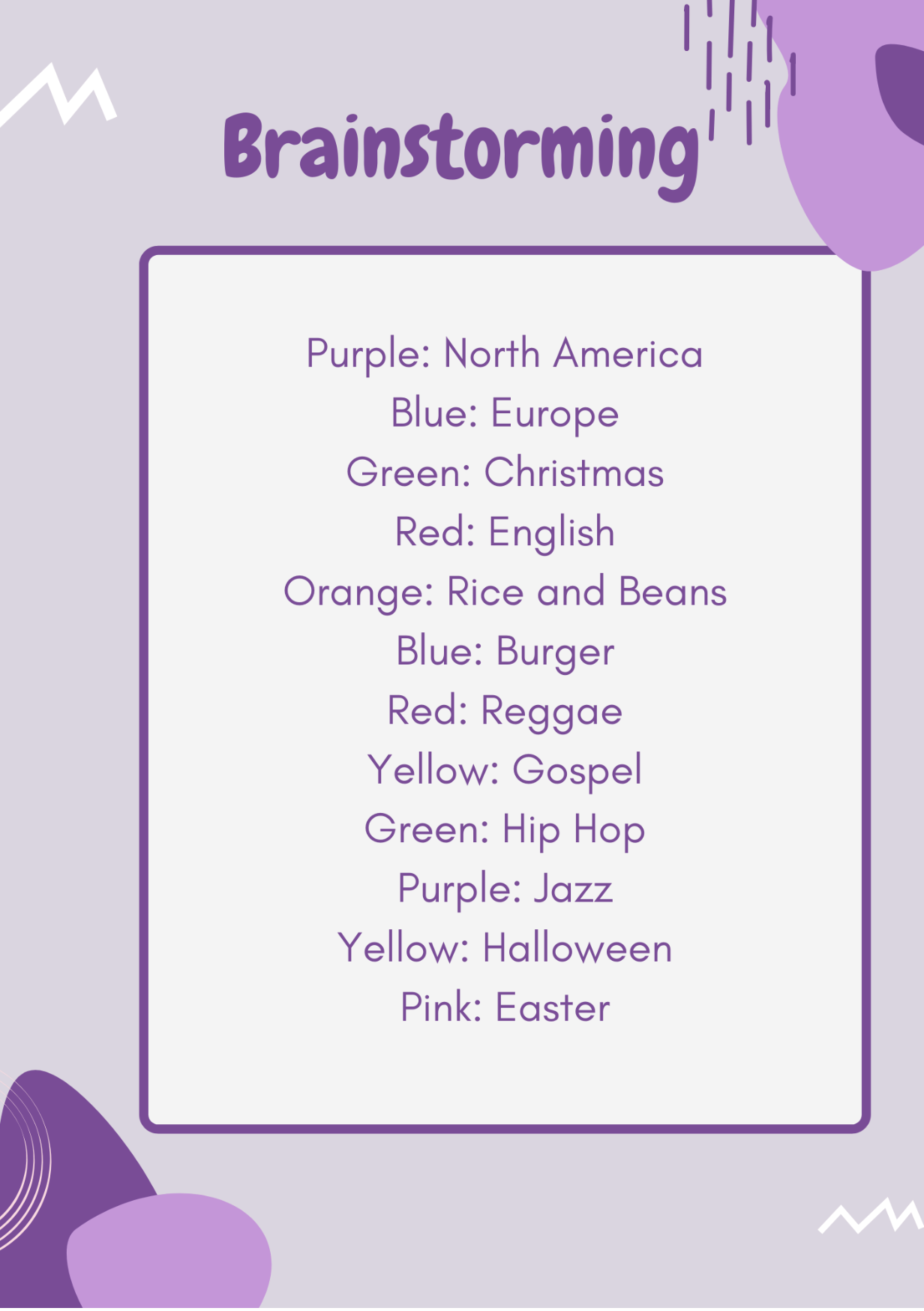The Many Colors of Me: What Makes Me Unique?
Activity Objective:
In third grade, students learn about cultural diversity and how cultural diversity applies to them.
This project's goal is to have students develop an understanding of their cultural makeup and what makes them diverse.
Materials:
A 12x18-inch piece of paper
A 9x12 inch piece of paper
Paper plate
Googly eyes
Markers and crayons
Scissors
Stapler
Glue stick
Pencil
Eraser
Optional Materials:
Decorating materials (such as stickers and glitter)
Instructions:
Before starting the project, students should review the list of holidays, languages, foods, musics, and celebrations below. Then students should select the crayon colors corresponding with the words from each row that best represent them and their family's traditions. Certain colors will be used multiple times. (See brainstorming below)
Next, on the center of the back side of the paper plate, students should shade in small rectangular regions, alternating between each color selected in step 1 for each region. (See video example)
After the plate is fully colored, on the 9x12 inch piece of paper, students should use a pencil to outline a three inch long watermelon shape. Then, students should go over their pencil outline in red or pink marker. Once completed, students should have a drawing of a smile showing teeth. (See video example)
Students can cut out their smile drawing make in step 3.
Next, students can attach the googly eyes to their paper plate. The googly eyes should be positioned a third of the way down the plate with a two inch space between the eyes.
Then, students can glue the mouth they made in step 3 to the center of the plate, two inches below the eyes.
After, using a crayon, students can add other facial features such as a nose, eyebrows, and eyelashes to their plate. (See video example)
Next, using a marker, students can add hair to the face by coloring the outside rim of the plate's backside in a hairlike texture. (See video example)
Then, on the bottom-left corner of the 12x18-inch piece of paper, students can make a key to indicate what word or words each color used on the face represents. (See video example)
Using a stapler, students can staple the face onto the center of the 12x18-inch piece of paper.
Finally, students can add their name to the top of the 12x18-inch piece of paper and add other decorative items to the paper, such as stickers. (See photo example)
Sample Discussion:
Students can state the word(s) each color on their plate's face represents. While stating each word, students can describe what that word means to them and their family and the memories behind the word. Additionally, a parent can explain how the word stated reflects the countries and cultures that the student comes from.
Example discussion:
Student: The color red partially represents the word reggae. I chose this word because my family is from Jamaica and often listens to reggae music. This word reminds me of my family's Christmas tradition of going to my Grandpa's house for Christmas Day where he would play the reggae versions of American Christmas songs.
Parent: Reggae music is very special to our family because it represents our Jamaican roots. Since the late 1960s, reggae music has been recognized as the primary style of music in Jamaica. Jamaican reggae music grew out of the Rastafari movement which was a religious and social movement that believed in brotherhood and redemption.



